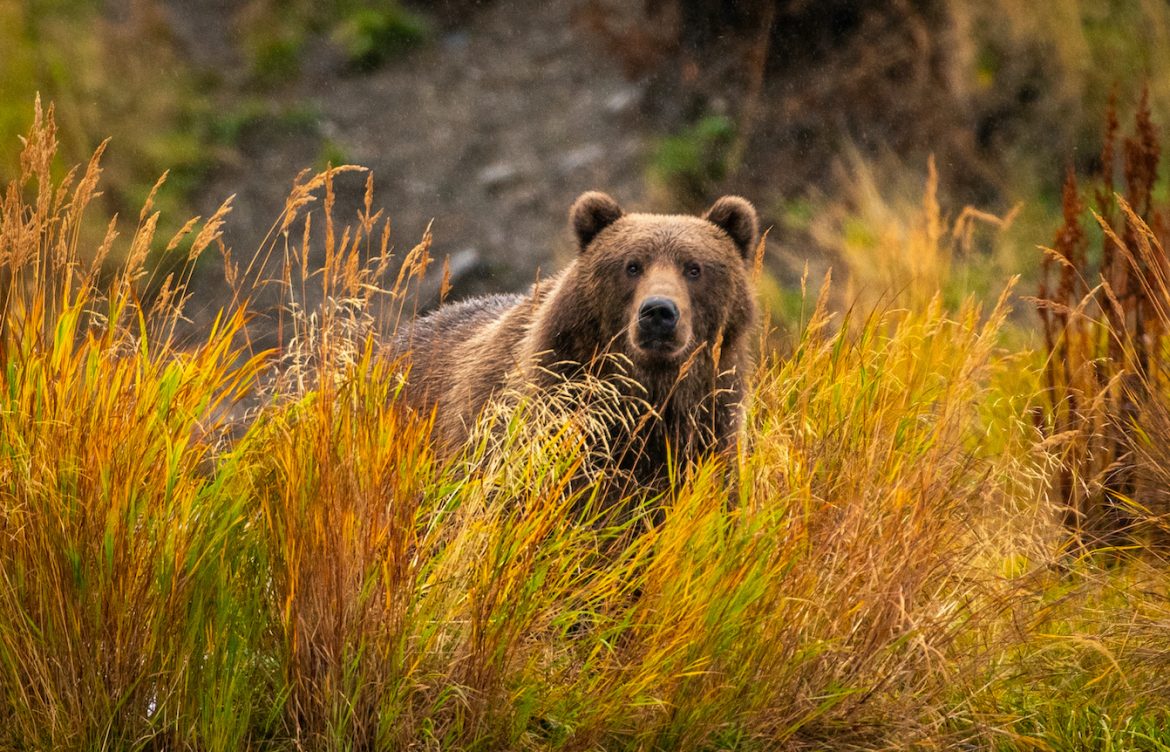Whether its hunting, fishing, or bear viewing, Stacey Simmons is packed and ready for any Kodiak adventure.
Discover Kodiak launched Adjust Your Altitude in 2019, a hiking challenge encouraging people to summit a few of the island’s peaks.
Senior editor Michelle Theall finds a more wild bear viewing experience, and great hospitality, at the Kodiak Brown Bear Center and Lodge.
Eric Beeman recounts the tale of a Kodiak deer hunt when a bear got to the deer before he and a client could.
Within a few years it may be possible to take go sightseeing from Kodiak to space. An advanced balloon will lift a capsule to the edge of the atmosphere.
An adult female bear peers through a dense thicket of cow parsnip. During the summer months, Kodiak turns a lush, vibrant green as thick vegetation carpets the island. Kodiak bears balance their diet with a variety of plants, including grass. Photo by Lisa Hupp. With 1.9-million acres to wander and no portion more than 15 miles from the Pacific, Kodiak National Wildlife Refuge includes some of the most diverse habitat on the planet, covering the southern two-thirds of Kodiak Island, all of Ban and Uganik islands, and a section of Afognak Island. Though notorious for its famed denizen, the Kodiak brown bear, a genetically distinct subspecies of browns/grizzlies, the refuge protects more than just big bruins. Consider that among the lush fjords, valleys, wetlands, and 4,000-foot peaks, more than 1,000 pairs of nesting bald eagles claim the area as their home, along with 250 species of migrating or breeding fish,…
More than just big bears.
Of Alaska’s 6,640 miles of coastline, some of the most ruggedly beautiful encircle Kodiak Island. Clusters of islands and rock outcroppings rise up from just beyond its jagged shoreline, while massive cliff faces with their craggy-ledged complexions share the island’s coarse coastline with long, narrow beaches of black sand and expansive tidal flats fanning out from the mouths of mountain-fed rivers that empty into the North Pacific.
The author bears witness to the decline and shuttering of Port Bailey Cannery, an operation on the north end of Kodiak Island.
NOTE: Map is reprinted with permission from Travel Alaska (travelalaska.com) and Alaska Native Heritage Center (alaskanative.net); edited text is courtesy of Travel Alaska. IÑUPIAQ & ST. LAWRENCE ISLAND YUPIK The Iñupiaq and the St. Lawrence Island Yupik people call themselves the “Real People.” Their homeland covers Alaska’s northern Arctic region, remote and diverse, and accessible primarily by plane. Filled with an amazing array of wildlife and a landscape ranging from coastline to tundra, Alaska Natives here rely on subsistence. SUGPIAQ & UNANGAX The southwest region’s coastal communities and archipelago are defined by rugged shoreline and terrain. Having long depended on the sea for survival, water is central to the Unangax̂ and Sugpiaq way of life. Their homeland stretches from Prince William Sound to Kodiak Island and along the 1,200-mile-long Aleutian Islands Chain. TLINGIT, HAIDA, EYAK, & TSIMSHIAN The southeastern panhandle is home to the Tlingit, Haida, Eyak, and Tsimshian.…










